

The company -Hirota International Flowers - had since closed down after the World Orchid Conference Djion, France. Bought as a seedling until it grew too big for the pot - Cattleyas can flower better when they fill the pot and start sticking out but when they stick out too much - they may dehydrate easier because of lack of water for the dangling roots. The media in which the start of the plant is in may have very few viable roots or the olf media had already started rotting.
Tools of the trade:
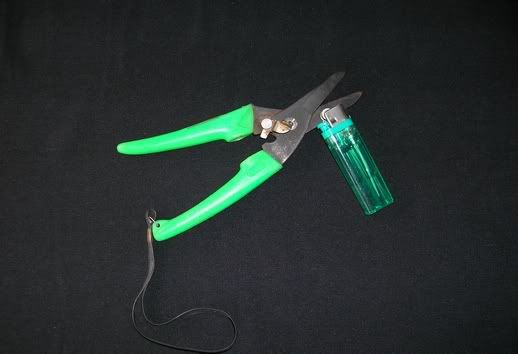
Your cutter and lighter - the cutter is for duh and the lighter is to sterilise the cutting blades. The key thing about sterilisation is the removal of viruses - these are systemic vectors and are almost impossible treat. Bacteria and fungi infections are not too bad as they can be dealt with very easily.
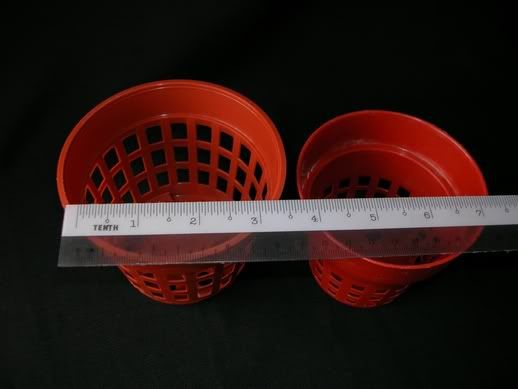
Pots - try to get those with holes a plenty. Although the roots need water, they also need to breathe. They also provide better drainage - but note that these holey pots are not suitable for those with a very dry home environment.

Powdered sulphur is the fungicide / dressing of choice for me - convenient and potent. Some prefer to use cinnamon but I do not quite the cost and the smell (it is not on something edible for goodness sake!). Captan or any other commercial fungicidal powders will also suffice.
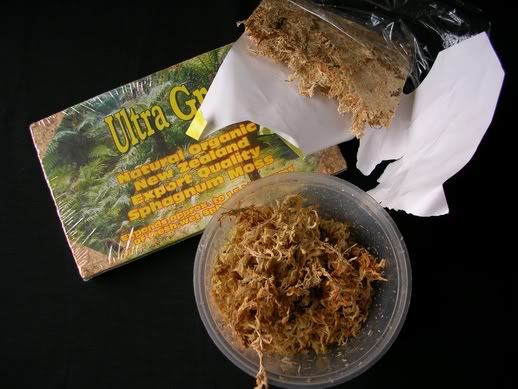
Sphagnum moss is a moistening agent just to help retain water for longer periods of time. Good sphag has long fibres and are free of other debris such as leaves and stems. Other alternatives include coir (coconut husk fibres) and osmunda.
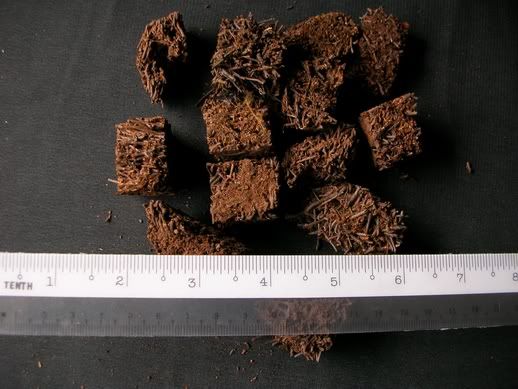
These are fernroot cubes - it can help retain water and also provides some form of nutrients for the plant. They can be made by sawing down fernroot slabs into size.
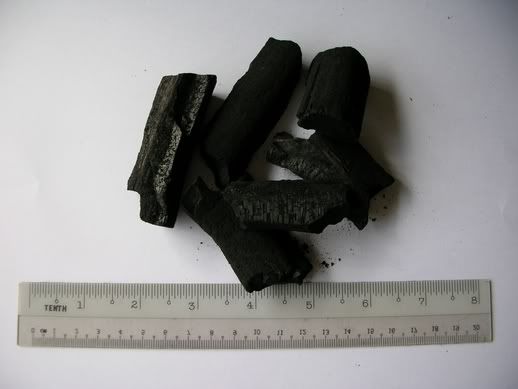
Charcoal is for drainage and it also helps to absorb excessive salt - in fact when repotting old plants, you may see shades of white salt deposits on the charcoal surfaces. The salt deposits also indicate the need to change the potting media.

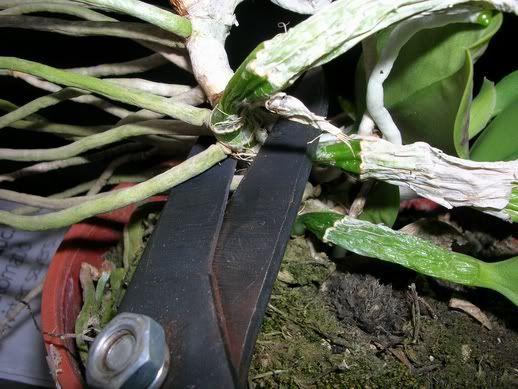
Cut the plant at the appropriate length. You should be left with a matured plant with about 2-3 backbulbs and one lead. The other backbulbs in the pot may be discarded (they are very slow growing at this stage - they are exhausted) but if you have the patience and space, you may want to repot them and try growing them.
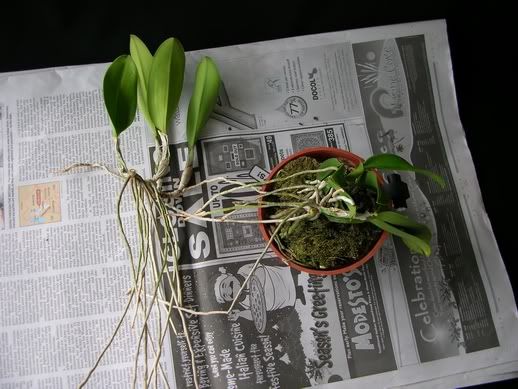
You would get 2 plants like so.

Dust the exposed rhizome with a fungicide
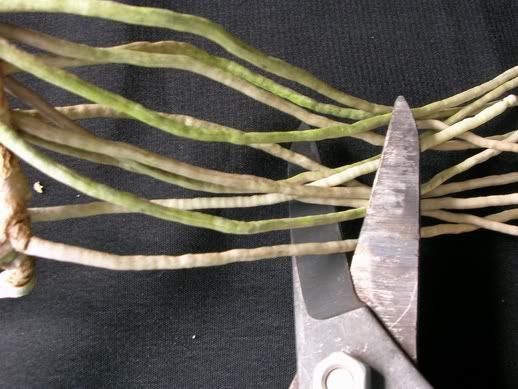

Trim down the roots and dust the exposed ends with funigicide. If the roots are too long, there is a problem to tucking the plant into the pot and the roots may end up breaking anyway.
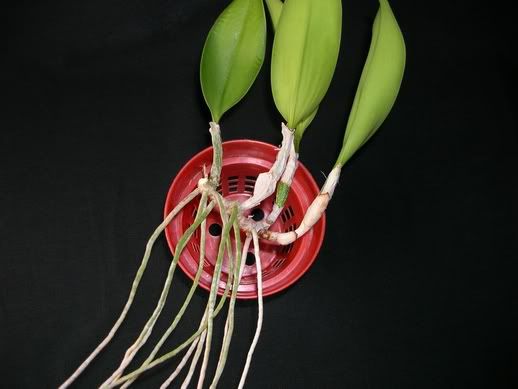
This pot is too small for the new plant - there is not enough space to accommodate new growth even though it is placed at the edge of the pot.
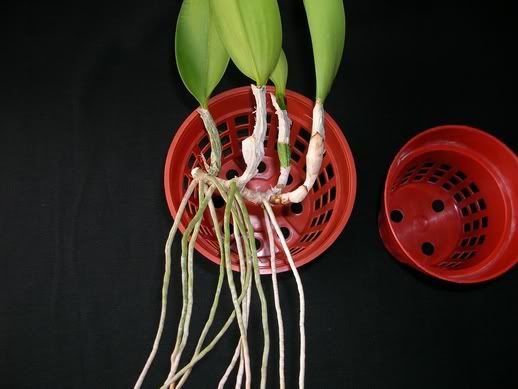
This pot can take another 2-3 pseudobulbs and is appropriate. If the pot is too big, the media may stay too wet as there is too much water and too little utilised by the plant. Also, if the pot is too big, it may take too long for the plant to flower - due to the Cattleya's habit of flowering only when the pot is compacted with pseudobulbs or when they start growing over the edge.
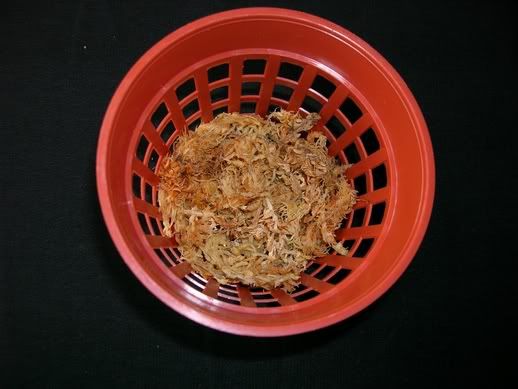
I like to pad the bottom of the pot with a water retaining agent as relative humidity is more important to epiphytic roots than direct contact with water.

Next is crocking material - to provide lift to the plant so as to raise it to above the rim of the pot.
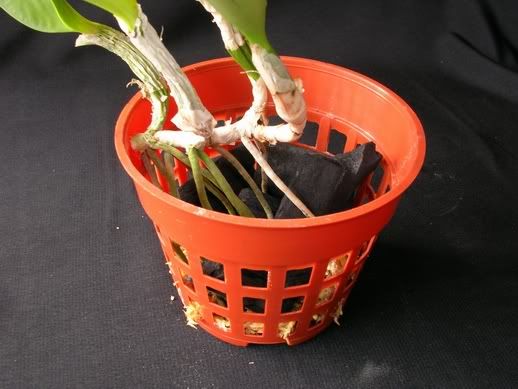

Fit your plant in. Try to force the backbulbs to the edge of the pot - it allows the space in the pot to be utilised fully.
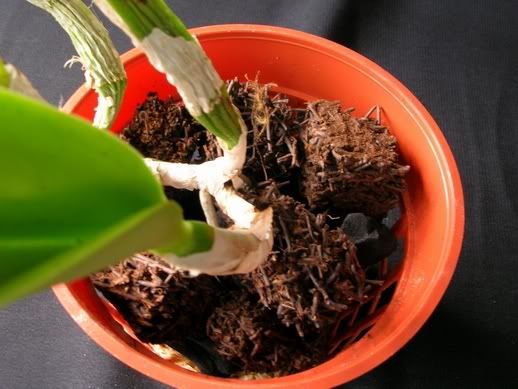
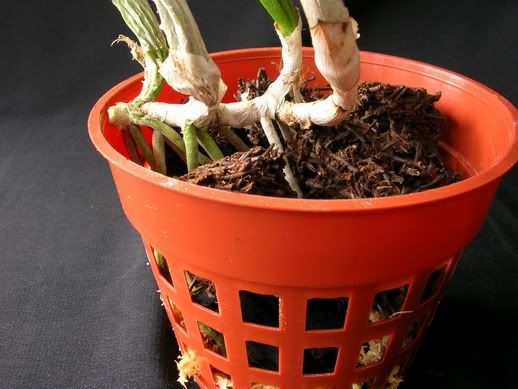
Top up with fernroot cubes and try to stabilise the plant. If the plant is still wobbly, you may want to introduce a stake.
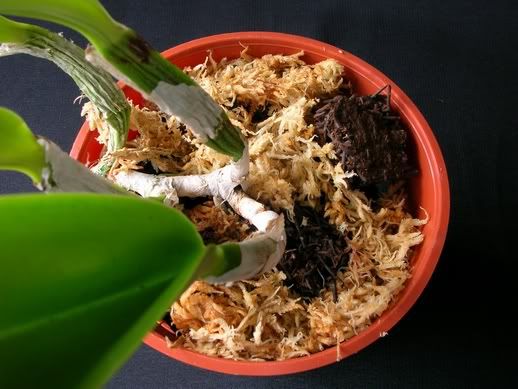
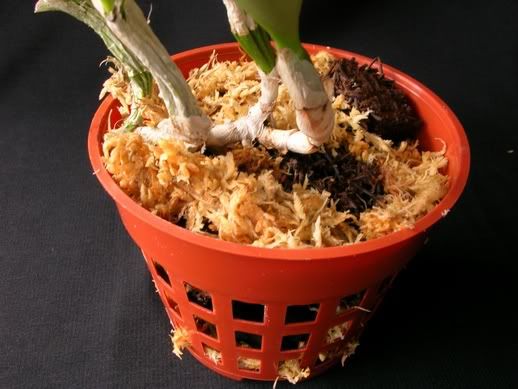
Stuff the gaps loosely with sphag.
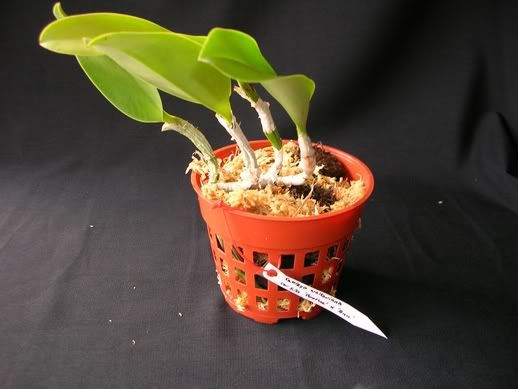
Tag the plant as always - if not you'll have a hard time identifying the plant if you have many copies and they look so similar. Some people may want to write the date of repotting but I repot at an ad hoc basis based on regular inspection, so I don't find a need to do so. Some may also write the name of the original supplier on the label.
 - randomn thoughts that cross my mind.
- randomn thoughts that cross my mind.
No comments:
Post a Comment